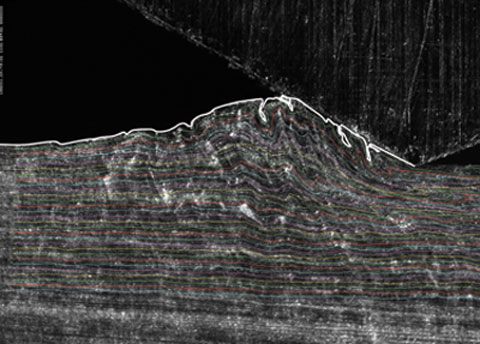Metallic Flow

A piece of copper (edge seen in white) deforms after grazing a steel edge in the upper right corner. The colored streak lines capture the velocity of the material.
Image Credit: Narayan K. Sundaram et al./PRL
June 25, 2013
Fluids — like water or air — can flow in a continuous stream. The breeze you feel outside is simply the flow of many different gas particles, and water falling out of a faucet contains many moving H20 molecules.
Solids, on the other hand, are a little bit different. The atoms inside a solid are more closely packed, and they don't move around as quickly or easily.
If one solid rubs against a strong surface, however, the solid will transform and then settle upon a new shape. In the image above, a copper sample grinded against the steel edge in the top right corner. During this process, the copper exhibited behavior very similar to that of a fluid.
The colored lines track the velocity of the copper atoms in different locations throughout the sample. The researchers conducting this experiment used high-speed imagery to measure how the copper changed during its collision with steel.














